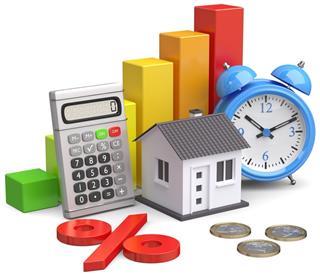
Different capital assets may belong to different capital cost allowance classes and have different CCA rates. To calculate your tax deduction of your capital cost, you need to classify your capital assets into different assets classes, and then use the different CCA rates in the calculation. The following lists the classes and CCA rates for most commonly used business assets.
Capital Cost Allowance Class 1 with CCA rate 4%
Class 1 includes most buildings acquired after 1987, unless they specifically belong in another class. Class 1 also includes the cost of certain additions or alterations you made to a Class 1 building or certain buildings of another class after 1987.
You also include in these classes the parts that make up the building, such as:
- electrical wiring;
- lighting fixtures;
- plumbing;
- sprinkler systems;
- heating equipment;
- air-conditioning equipment (other than window units);
- elevators; and
- escalators.
Note: Most land is not depreciable property. Therefore, when you acquire property, only include the cost that relates to the building.
Capital Cost Allowance Class 3 with CCA rate 5%
Most buildings acquired before 1988 are included in Class 3 or Class 6.
Include in Class 3 the cost of any additions or alterations made after 1987 to a Class 3 building that does not exceed the lesser of the following two amounts:
- $500,000; and
- 25% of the building’s capital cost (including the cost of additions or alterations to the building included in Class 3, Class 6, or Class 20 before 1988).
Any amount that exceeds the lesser amount above is included in Class 1.
Capital Cost Allowance Class 6 with CCA rate 10%
Include in CCA Class 6 with a CCA rate of 10% a building if it is made of frame, log, stucco on frame, galvanized iron, or corrugated metal.
Also include in Class 6 certain greenhouses and fences.
Capital Cost Allowance Class 8 with CCA rate 20%
Class 8 with a CCA rate of 20% includes certain property that is not included in another class. It includes:
- furniture,
- appliances,
- tools costing $500 or more per tool,
- some fixtures,
- machinery,
- outdoor advertising signs,
- refrigeration equipment,
- photocopiers, fax machines and telephone, and
- other equipment you use in business.
Capital Cost Allowance Class 10 with CCA rate 30%
It includes:
- motor vehicles,
- passenger vehicles unless they meet a Class 10.1 condition,
- computer hardware and
- systems software
Capital Cost Allowance Class 10.1 with CCA rate 30%
Include your passenger vehicle in Class 10.1 if the cost (not including HST) is more than $30,000. And you should list each Class 10.1 vehicle separately.
Example
Peter bought two passenger vehicles to use in his business. The cost for vehicle 1 is $33,000 + $4,290 (HST) = $37,290; and the cost of vehicle 2 is $28,000 + $3,640 (HST) = $31,640.
Peter should put Vehicle 1 in Class 10.1, since it cost him more than $30,000. And the capital cost for Vehicle 1 is $30,000 + $3,900(HST) = $33,900. This is because the maximum capital cost you can claim for a passage vehicle is $30,000.
Peter should put Vehicle 2 in Class 10, since it did not cost him more than $30,000. And the capital cost for Vehicle 2 is $28,000 + $3,640 (HST) = $31,640.
Capital Cost Allowance Class 12 with CCA rate 100%
Class 12 includes
- china, cutlery,
- linen,
- uniforms,
- computer software (except systems software), and
- tools, which cost is less than $500.
